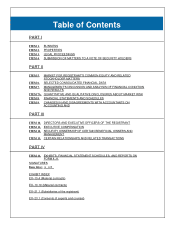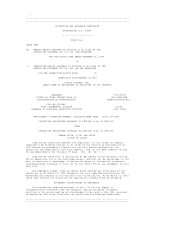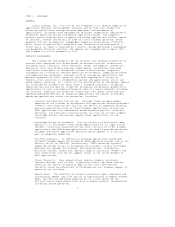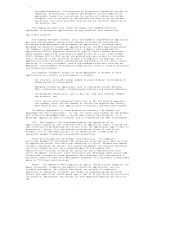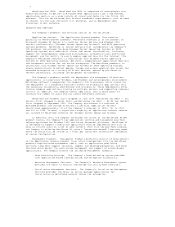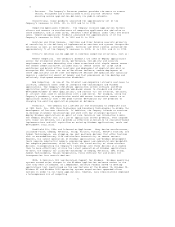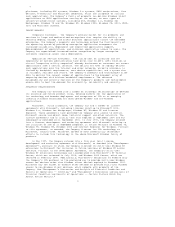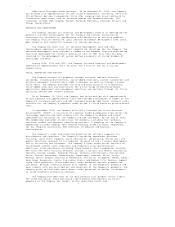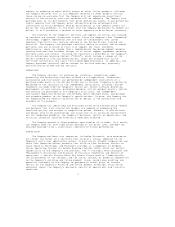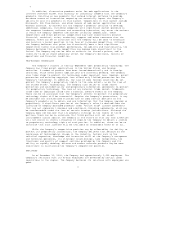Citrix 2000 Annual Report Download - page 8
Download and view the complete annual report
Please find page 8 of the 2000 Citrix annual report below. You can navigate through the pages in the report by either clicking on the pages listed below, or by using the keyword search tool below to find specific information within the annual report. 6
platforms, including DOS systems, Windows 3.x systems, UNIX workstations, Java
devices, X−Terminals and Macintosh computers, which are incapable of running
such applications. The Company's family of products can deliver Windows 32−bit
applications or UNIX applications running on the server, to most types of
network−attached client systems, including DOS, Windows 3.x, Windows for
Workgroups, Windows 95 and 98, Windows NT, Windows 2000, Windows CE, OS/2, UNIX,
Java and Macintosh systems.
TARGET MARKETS
Corporate Customers. The Company's primary market for its products and
services is large and medium−sized enterprises that require the ability to
securely deploy, manage, and access business applications across the extended
enterprise. The Company's products and technology extend the functionality of
the operating system by providing enterprise application management for
increased scalability, deployment and simplified application support,
Web−enablement of applications, and universal application access to users. The
Company has experienced increased market acceptance by larger enterprise
customers requiring larger scale deployments.
Application Service Providers. The rising cost of licensing and the
complexity of systems administration have given rise to ASPs. ASPs function as
virtual "computing utility companies" whereby businesses or consumers can access
applications from a central location. The ability for ASPs to rapidly deliver
such applications over the Internet and other networks, wired to wireless, is
limited by bandwidth requirements, user device capabilities, and a system that
is scalable, reliable and secure. The Company's products and technologies allow
ASPs to deliver the largest number of applications to the broadest array of
computing devices with minimum bandwidth requirements. The advanced
manageability and security features of the Company's products and technologies
enable ASPs to meet the demands for scalability, reliability and security.
STRATEGIC RELATIONSHIPS
The Company has entered into a number of strategic relationships to develop
its existing and future product lines, develop markets for the application of
its technology and broaden deployment and acceptance of ICA as an emerging
industry standard technology for distributed Windows and non−Windows
applications.
Microsoft. Since inception, the Company has had a number of license
agreements with Microsoft, including licenses relating to Microsoft OS/2,
Windows 3.x, Windows for Workgroups, Windows NT, Windows CE and Internet
Explorer. These agreements have provided the Company with access to certain
Microsoft source and object code, technical support and other materials. The
license agreements had an initial term that expired in September 1994 and was
subsequently extended until September 2001. In July 1996, the Company entered
into a license, development and marketing agreement with Microsoft relating to
the inclusion of ICA as an embedded component in future versions of Windows 95,
Windows 98, Windows NT, Windows 2000 and Internet Explorer for Windows. Pursuant
to this agreement, as amended, the Company licenses its ICA technology to
Microsoft, royalty−free. Microsoft agreed to make commercially reasonable
efforts to include this technology in the above Microsoft Windows family of
products.
In May 1997, the Company entered into a five year joint license,
development and marketing agreement with Microsoft, as amended (the "Development
Agreement"), pursuant to which the Company licensed its multi−user Windows NT
extensions to Microsoft for inclusion in future versions of Windows NT server
software. Pursuant to the Development Agreement, the Company's multi−user
Windows NT extensions technology was incorporated into Microsoft's NT Terminal
Server, which was released in July 1998, and Windows 2000 Server, which was
released in February 2000. Additionally, Microsoft's obligation to endorse only
the Company's ICA protocol as the preferred way to provide multi−user Windows
access for devices other than Windows client devices expired in November 1999.
Microsoft may now market or endorse other methods to provide multi−user Windows
access to non−Windows client devices, which compete with products of the
Company. See "Management's Discussion and Analysis of Financial Condition and
Results of Operations −− Overview," and "Management's Discussion and Analysis of
Financial Condition and Results of Operations −− Certain Factors Which May
Affect Future Results."
6


